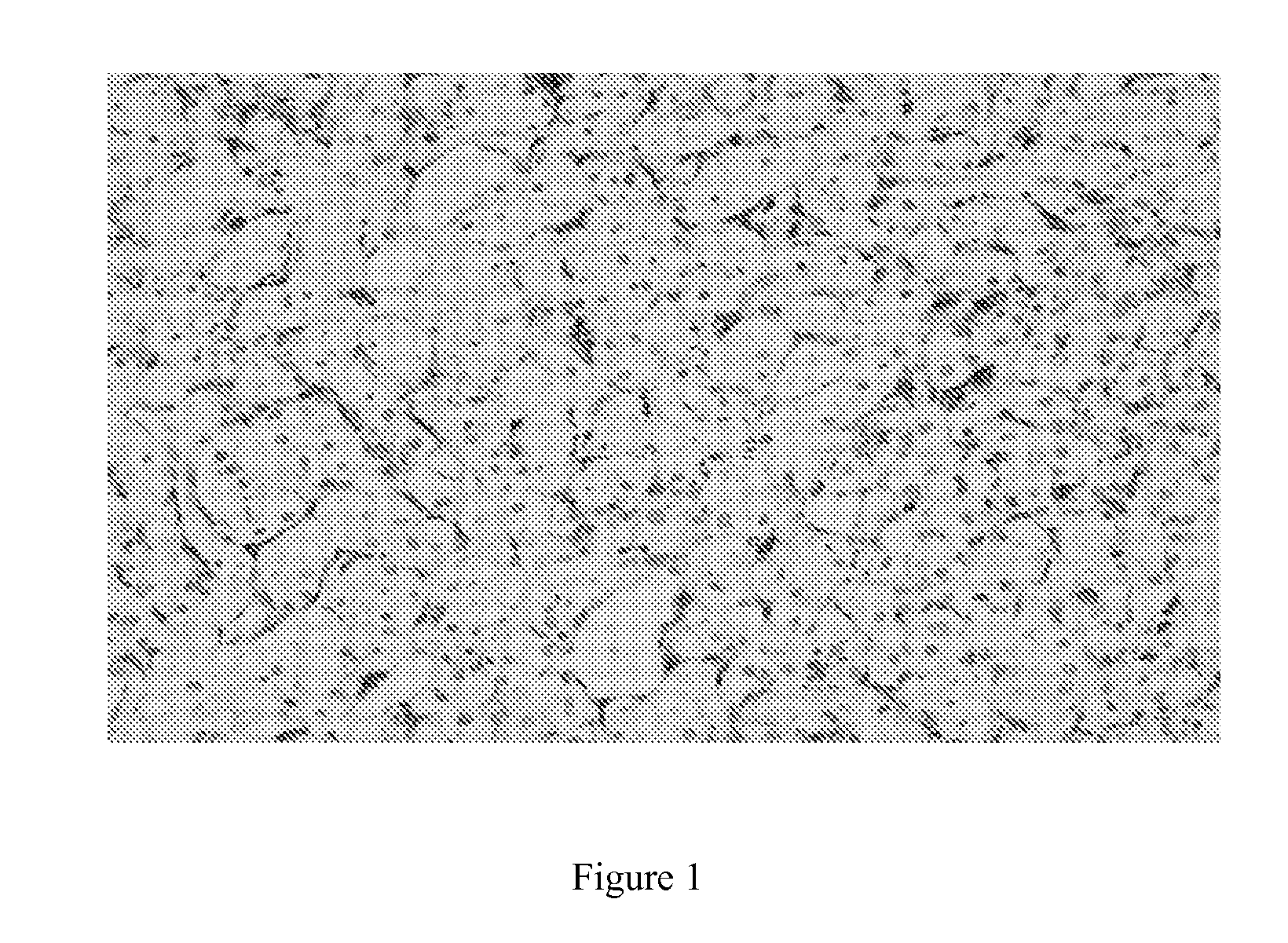Methods and materials for treating renal cell carcinoma
a technology of renal cell carcinoma and materials, applied in the direction of immunoglobulins, peptides, drugs against animals/humans, etc., can solve the problems of inability to explain the variability of patient outcome, and achieve the effect of avoiding unnecessary treatment attempts and unnecessary patient suffering
- Summary
- Abstract
- Description
- Claims
- Application Information
AI Technical Summary
Benefits of technology
Problems solved by technology
Method used
Image
Examples
example 1
Intratumoral and Peritumoral CD14 Expression Among Patients with Clear Cell Renal Cell Carcinoma
[0028]In a pilot study, ccRCC tumors with high Stage, Size, Grade, and Necrosis (SSIGN) scores were found to have significantly higher levels of CD14 expression compared with tumors with low SSIGN scores (Table 1). Briefly, CD14 expression was evaluated in 50 clear cell renal cell carcinoma (ccRCC) cases. The samples were randomly selected from a ccRCC cohort and consisted of 25 cases with low (0-2) and 25 cases with high (7+) SSIGN scores (Frank et al., J. Urology, 168:2395 (2002)). Intratumoral and peritumoral CD14 expression was quantitated as absent, focal, moderate, or marked.
TABLE 1CD14 expression in 50 ccRCC cases.SSIGN ScoreLowHighCD14 ExpressionN = 25N (%)N = 25P-valueIntratumoralAbsent2 (8)1 (4) 0.165Focal14 (56)8 (32)Moderate 7 (28)9 (36)Marked2 (8)7 (28)IntratumoralAbsent / Focal16 (64)9 (36)0.048Moderate / Marked 9 (36)16 (64) Peritumoral (N = 46)Absent2 (8)0Focal19 (79)6 (27)Mod...
example 2
Treating Renal Cell Carcinoma Patients
[0039]A newly diagnosed RCC patient who is currently not being treated and who has a high level of CD14+ cells within tumor or peritumoral tissue is treated with standard of care (e.g., surgery), but is subjected to increased surveillance as this patient is highly likely to relapse and / or experience metastasis.
[0040]A newly diagnosed RCC patient who is currently not being treated and who has no CD14+ cells within tumor or peritumoral tissue is treated by surgery if indicated and observation.
[0041]An RCC patient who is currently being treated with a standard cancer treatment and who has a high level of CD14+ cells within tumor or peritumoral tissue is included in a clinical trial or other aggressive therapy without waiting for relapse.
[0042]An RCC patient who is currently being treated with a standard cancer treatment and who has no CD14+ cells within tumor or peritumoral tissue is under a routine schedule of observation without additional treatm...
example 3
Correlation Between Intratumoral CD14+ Cell Levels and CD14+ / DR− Peripheral Blood Levels
[0043]A group of 17 patients had tumor samples that were assessed for the level of CD14+ cells and had peripheral blood samples that were assessed for CD14 and HLA-DR staining. The tumor samples were classified as having a high intensity of CD14+ staining (high), a medium intensity of CD14+ staining (medium), or a low / no intensity of CD14+ staining (low / none). The peripheral blood samples were assessed to determine the mean fluorescence intensity (MFI) of HLA-DR+ staining for peripheral blood cells that are CD14+.
[0044]As the level of CD14+ staining increases in intratumoral tissue, more CD14+ cells in the periphery lose HLA-DR expression (FIG. 4). These results demonstrate that there is an association between the level of intratumoral CD14+ cells and the level of peripheral CD14+ / DR− cells. These results also demonstrate that the level of CD14+ / DR− cells can be used to measure the intratumoral l...
PUM
| Property | Measurement | Unit |
|---|---|---|
| Fraction | aaaaa | aaaaa |
| Fraction | aaaaa | aaaaa |
| Fraction | aaaaa | aaaaa |
Abstract
Description
Claims
Application Information
 Login to View More
Login to View More - R&D
- Intellectual Property
- Life Sciences
- Materials
- Tech Scout
- Unparalleled Data Quality
- Higher Quality Content
- 60% Fewer Hallucinations
Browse by: Latest US Patents, China's latest patents, Technical Efficacy Thesaurus, Application Domain, Technology Topic, Popular Technical Reports.
© 2025 PatSnap. All rights reserved.Legal|Privacy policy|Modern Slavery Act Transparency Statement|Sitemap|About US| Contact US: help@patsnap.com



